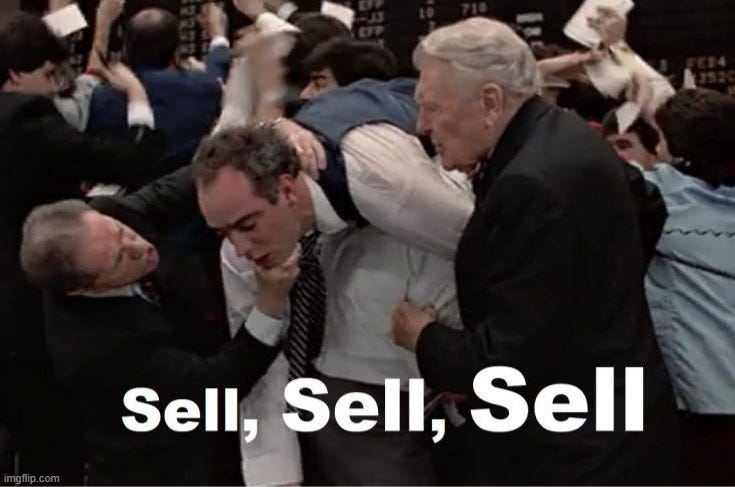The Only Thing You Truly Own Online Is Your Newsletter. Do You Have One?
Social media and search engines control access to your audience. You only "rent" your presence on social platforms. Your email list is the one asset you fully control. Understand this to grow.
Control over your online presence on the various social channels – and even your website – is an illusion.
The only digital property you control is your email list (and if you spam that list, you’ll lose control of that too).
What people and businesses continue to ignore is all of the work you do on any social media platform is done on rented land. And you, me, our customers and potential customers; we are the product.
Google is in the process of choking access to websites by ripping everyone off to create AI answers to search queries. Where did those AI results come from? Everyone Google indexes – so they’ve pulled off the two-fer of using everyone’s content to create answers to keep people from visiting your website so that they can sell you more Google Ads so you can reach the audience you created your website and all that content for.
As for LinkedIn, Facebook/Instagram/Threads, TikTok, and whatever comes next; you’re just their product. Your presence there can be removed at the whim of the platform owner.
And even if your profile isn’t removed, your reach can be throttled – shadow banning to choke an account’s reach is real.
I could go on, but the essential point is: You. Are. Not. In. Control.
Despite this reality, you can and should continue to use those platforms to reach new and existing customers.
But to own the relationships, you need a direct, one-to-one relationship.
Enter the email list.
Your email list is more than just a database of contacts — it’s your most powerful asset. By using it to send consistent, value-driven newsletters, you can sidestep the limitations of rented online spaces.
If you’re not hitting send regularly, you’re leaving money, trust, and opportunity on the table.
Here are six reasons you should build your own newsletter.
1. Build a list; Control Your Destiny
To recap my opening points: social media algorithms change, Google adjusts its search rankings, and your LinkedIn posts might reach fewer people than ever before as they continually tweak their algorithms.
But your email list? That’s 100% yours. No one can take it away or control how you use it. If you're not building and nurturing this list, you're gambling with your business. Unlike platforms where you’re renting space, email gives you a direct line to your audience—one that’s not limited by external factors like algorithm shifts or throttling.
However, owning the list comes with a responsibility: don’t spam. Nobody likes being bombarded with irrelevant messages. Keep things thoughtful, useful, and personal, and you’ll stay in your subscribers’ (and email service providers’) good graces — and their inboxes.
2. Consistent Engagement to Stay Top of Mind
Out of sight, out of mind—this old saying is truer than ever. If you’re not showing up consistently, your customers will forget about you. Regular newsletters are the perfect way to stay in front of your audience without being intrusive. Whether it’s monthly or bi-weekly (or even daily), showing up in their inbox with valuable content ensures that when they need your product or service, you’re the first one they think of.
Consistency also breeds familiarity and trust. People are more likely to buy from businesses they know and trust, and what better way to build that than by consistently delivering value straight to their inbox?

3. Direct Traffic Where You Want It to Go
Every newsletter is an opportunity to guide your customers back to your website, landing pages, or a specific product. Think of it as your personal “open door” invitation. Instead of waiting for them to come across your content in a sea of distractions, you’re giving them a direct route to your site.
This also has the added benefit of boosting your site’s traffic, which can help with SEO (despite Google’s ongoing attempts to keep traffic on the SERP – search engine results page – you still need to pay attention to SEO basics to attract folks to your website) and give you more opportunities to convert those visitors into paying customers. If you're using marketing automation tools like HubSpot, you can track how users interact with your emails and website, learning more about what they want so you can deliver an even more personalized experience.
4. Make It About Them: Personalization
While a single newsletter may work well, it pays to personalize. This can be as simple as using “Howdy Bill” instead of “Hello” to begin each newsletter (or in a subject line). With the right tools and strategy, you can also segment your audience and send tailored content that speaks directly to what they care about.
The better you know your customers, the more targeted and relevant your messaging can be, whether you're speaking to different industries, product interests, or buyer personas.
Personalized emails see higher open rates, more engagement, and ultimately lead to better relationships with your audience. And those relationships? They’re what drive long-term customer loyalty and higher lifetime value.

5. Promote Sales, Offers, and Product Launches
As much as I believe in delivering useful, actionable content to an audience, marketing is ultimately about adding money into your pocket.
Your email list is the perfect place to offer exclusive promotions, product launches, or limited-time deals. This is your most loyal audience, the people who have already expressed interest in your brand. By offering them something special or giving them early access to a new product, you’re rewarding their loyalty and encouraging repeat business.
Emails are the perfect way to create excitement, build anticipation, and directly inform your audience about anything new happening with your business. Unlike social posts that might get lost in a busy feed, emails feel more personal and direct, increasing the likelihood of engagement and action.
6. Provide Value Beyond Selling
You have to care about your customers to fully embrace this one, but I think and believe it’s what separates the good from great companies.
A newsletter shouldn’t just be a sales tool — it's an opportunity to deliver real value to your customers. Share helpful tips, industry insights, or even behind-the-scenes looks at your business. By providing useful information that solves your audience’s problems or helps them achieve their goals, you're creating goodwill.
This approach positions you as more than just a business trying to sell something—it makes you a trusted resource, a partner in their success. And when the time comes to buy, guess who they'll think of first?
I mean, does anyone truly enjoy being constantly dry humped for more sales in every email you receive from a company? If you don’t, why are you doing that to your customers?

Conclusion: It’s Time to Hit Send
Let’s recap: your email list is the one thing you can always count on in a world of shifting algorithms and rented online real estate. Sending out regular newsletters isn’t just a way to stay in touch — it’s your direct line to your customers' inboxes, where you can provide genuine value, build trust, and, ultimately, drive conversions.
By owning the conversation and keeping the relationship alive, you ensure your business isn’t at the mercy of unpredictable platforms.
So stop waiting. You have customers. Talk to them regularly and not only when you want to sell them something.
Hit send, share what you know, and start turning those customers into fans.
And if you're feeling overwhelmed by the process, let me know—my Newsletter-in-a-Box service could be just the thing to get you started.



Thanks, great tips! I’ve a newsletter on ConvertKit as well, but getting people to subscribe is also not so easy these days.
So much information available and I ‘m also getting tired of subscribing and no time to read all these newsletters, believe it’s the same for many of us.